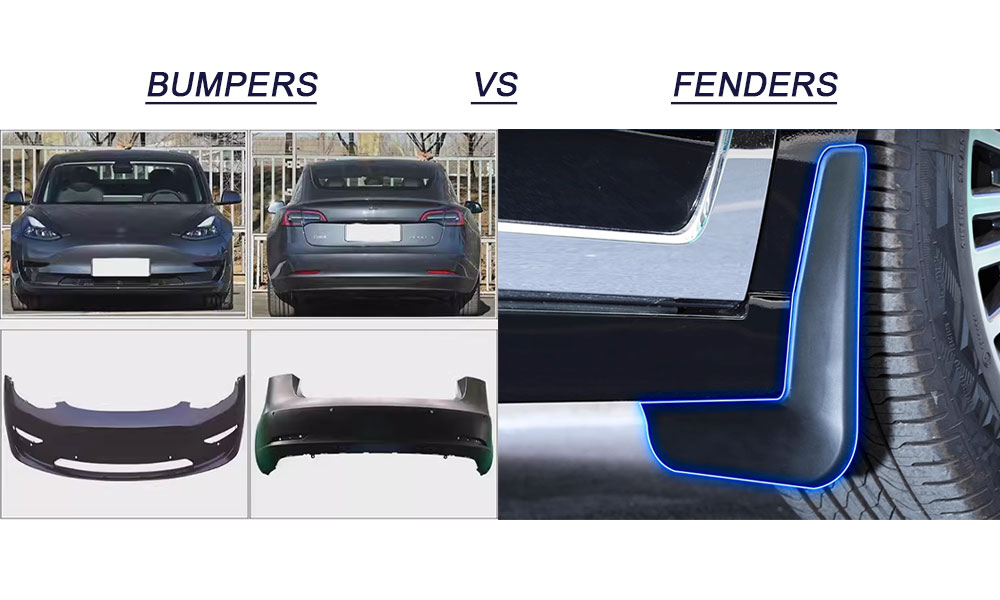In electric vehicles, fenders and bumpers are two important parts, which play different roles in appearance design and functionality. Understanding the difference between the two will help car owners better maintain and choose accessories.
Characteristics of fenders
Installation location: Fenders are usually installed above or around the wheels to cover part of the tire area.
Main function: Prevent mud, stones or water splashes from splashing onto the body or other vehicles, protecting the paint and pedestrian safety.
Common materials: mainly plastic or rubber, light and wear-resistant.
Characteristics of bumpers
Installation location: The bumper is located at the front and rear of the vehicle and is one of the important protective structures of the vehicle body.
Main function: Absorb impact force when the vehicle collides, reduce damage to the body and personnel, and provide certain protection for pedestrians.
Common materials: Made of metal (such as steel or aluminum) and plastic composite materials, it has both strength and elasticity.
Detailed comparison of fenders and bumpers
| Items | Fender | Bumper |
| Definition | Small guards installed around the wheels | Fixed to the front and rear of a vehicle to protect the larger structural parts of the body frame |
| Main functions | Prevent splashing of mud, water and stones, protect the appearance of the car body and the safety of pedestrians | Absorb the impact of collision, reduce damage to the car body, and protect the safety of pedestrians and passengers in the car |
| Installation location | Above or on the side of the wheel | Front and rear end of the vehicle |
| Common materials | Plastic, rubber or composite materials | Metal (steel, aluminum) and plastic composite materials |
| Frequently Asked Questions | Wear and chipping require regular cleaning and inspection | Scratches and deformations, minor damage can be repaired, serious damage requires replacement |
Fenders and bumpers play different roles in electric vehicles. Fenders focus more on protecting against dirt and stones that may splash during daily driving, while bumpers provide higher safety and protection in the event of a collision. Reasonable maintenance and timely inspection of these two parts can not only extend the service life of the vehicle, but also ensure driving safety.


